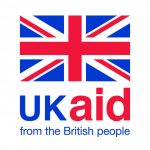In previous research conducted in Kenya and Bangladesh by the GSMA Assistive Tech team, we learnt that mobile is a valuable tool that helps people with disabilities to access education, healthcare employment and transportation. However, in interviews with experts and people with disabilities, we also learnt that often mobile solutions are not appropriate and accessible to their needs. For instance, smartphone users with visual impairment in Bangladesh who rely on voice recognition technologies to operate a handset report that solutions such as TalkBack (Android) and VoiceOver (Apple) do not recognise Bengali accurately, local dialects, nor English spoken with a Bengali accent. To resolve the gap between solutions and need, innovators are taking actions to design and develop innovations that better understand the needs of people with disabilities and the local context.
The GSMA Assistive Tech team, together with Urban Emerge, conducted a landscape study to identify digital solutions emerging from Africa and Asia that are addressing the needs of people with disabilities. Based on this research, digital assistive technologies (AT) are defined as applications of frontier technologies or information and communication technologies (ICTs) that support persons with disabilities to live independently and fully participate in society. Digital AT solutions include those that help people to carry out a personal function with greater autonomy (for example, identify an object, navigate around a city or communicate with others) and those that provide services including education, employment or healthcare, or access information in a more accessible[i] way than non-digital services.
Mobile is fundamental for the design of digital AT innovations
From a total of 93 innovations emerging from Africa and Asia, we identified three different types. Nineteen per cent of the solutions are non-mobile digital ATs that rely on hardware but do not require a mobile phone. Examples include VRapeutics, a virtual reality handset developed in Egypt, which is used by therapists to provide therapy to children with intellectual disabilities.
We found that overwhelmingly mobile is fundamental for the design of digital AT innovations. More than 80 per cent of the solutions identified were either mobile-based or mobile-enabled solutions. Mobile-based ATs are usually apps, or devices that connect to mobile and help users to perform functions in everyday life. Around half of the total solutions identified were digitally-enabled, which are mobile- or computer-enabled platforms that make services more accessible for persons with disabilities, such as Kibo in India as outlined below.
Spotlight: Kibo in India
Trestle Labs in India developed a solution to help persons with visual impairment to listen to text in eBooks and scanned documents. Kibo XS uses a camera to capture printed documents and digitise text, which is then uploaded and read out loud using the Kibo website. Considering that many of their users are smartphone owners, Trestle Labs has developed Kibo app which uses the smartphone camera to capture text or scan documents, without the need of using Kibo XS. They have over 20,000 active users, and over 10 therapy centres use Kibo XS in India, Tanzania and Singapore. The Kibo app can be downloaded for free by the users.
There are hotspots of digital AT innovation but in more than 30 countries no locally developed solutions were identified
Innovation hotspots were identified in the research and include India, Kenya, Egypt, and South Africa. However, 33 countries had zero instances of locally grown digital AT innovation. The lack of widespread innovation activities in digital AT suggest that either digital AT innovations are not a priority—perhaps due to lack of demand or interest from innovators—or that significant barriers remain for innovators to succeed in this area.
Figure 1 Hotspots and geographical spread of digital AT innovations

Digital AT innovations that focus on user needs and experience tend to be successful in terms of identifying the solutions
The inclusion of people with disabilities in the innovation team is essential for success. There are many ways in which people with disabilities can be involved in the innovation process. For instance, some digital AT innovations emerge from challenges experienced by people with disabilities, which drives them to find solutions and become innovators themselves. Sometimes, they team up with start-ups or innovators in the process.
Also, using human-centred design, innovators involve people with disabilities throughout the innovation process as informing the design of the solutions as experts of their experience or testing prototypes. Commonly, innovators work with the support of disability organisations or disabled persons organisations (DPOs), who sometimes are also involved in the innovation process.
Innovators value the mentorship and support from innovation hubs, accelerators and incubators. However, securing initial funding is a barrier for most.
Start-ups are the main innovators in digital AT as they developed more than 40 per cent of the innovations identified. Non-profit organisations, including DPOs, and small companies are also active and have developed over 20 per cent of the solutions each.
Digital AT innovators highly regard the support provided by mentors, innovation hubs, accelerators and incubators. The experience from mentors and access to networks helps them to navigate their complex and often challenging innovation path. However, for most innovators, access to funding remains the main challenge to either move past the proof-of-concept stage or scale-up tested innovations.
Figure 2 Proportion of digital ATs developed by type of stakeholders

Affordability is at the core of the business models employed by innovators in the digital AT space
Most of the time, people with disabilities have limited opportunities for employment and purchasing AT solutions can be prohibitive. For this reason, digital AT innovators have focused on offering services free of charge or at a very low-cost for the user. This means that innovators need to identify other revenue streams that allow them to establish a sustainable model. Examples include selling the solution to different types of users, including persons with or without disabilities, providing a service for by-products (such as data generated and service information). By mixing different business models, innovators can establish their solutions and address some of the challenges to scale-up.
Ensuring an enabling ecosystem and addressing challenges to scalability are critical for the success of digital ATs
Successful digital AT innovations emerge in enviroments that are supportive for innovators. Innovation ecosystems for digital ATs require adequate internet coverage, policies and frameworks driving the digital inclusion of people with disabilities, and local champions advocating for the greater digital inclusion of people with disabilities. Users also require the digital skills that can help them make the most of the solutions.
Digital ATs can provide life changing support to people with disabilities and, when locally developed, they satisfy needs not currently addressed by existing solutions. Many innovators, however, still face a difficult innovation path and promising innovations disappear in the “valley of death”. To avoid this, digital AT innovators need to:
- Understand the needs of their target users with openness and find wider applications to their solution;
- Offer solutions that can be relevant to more than one group;
- Develop digital skills of the users as it is fundamental for the success of the product.
Are you a start-up, SME or social enterprise supporting the digital inclusion of people with disabilities across Africa or Asia? If yes, you’re in luck – the GSMA Innovation Fund for Assistive Tech is launching in early September. More information to follow soon…
[i] The characteristics of products, services or environments designed to be inclusive



